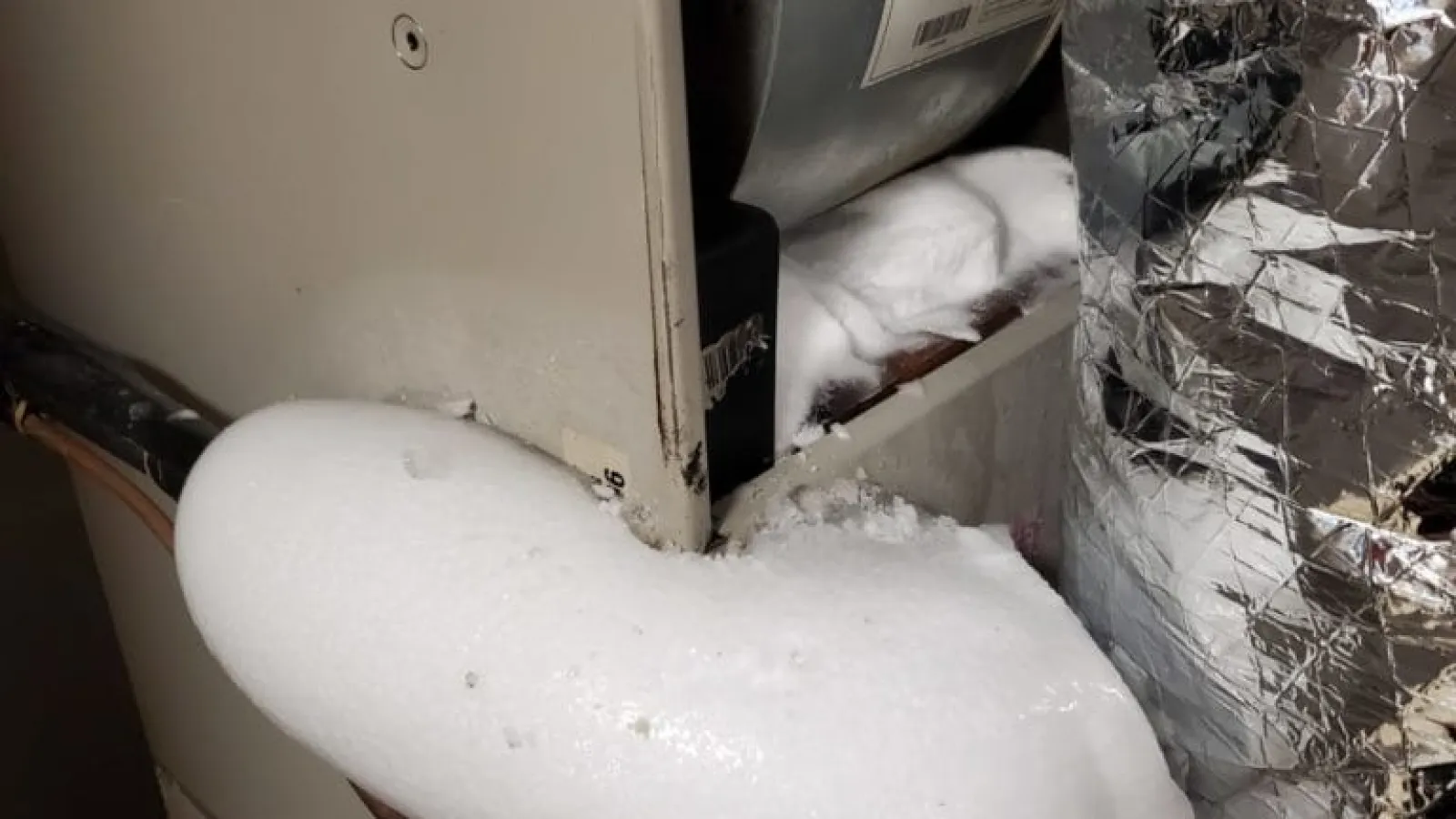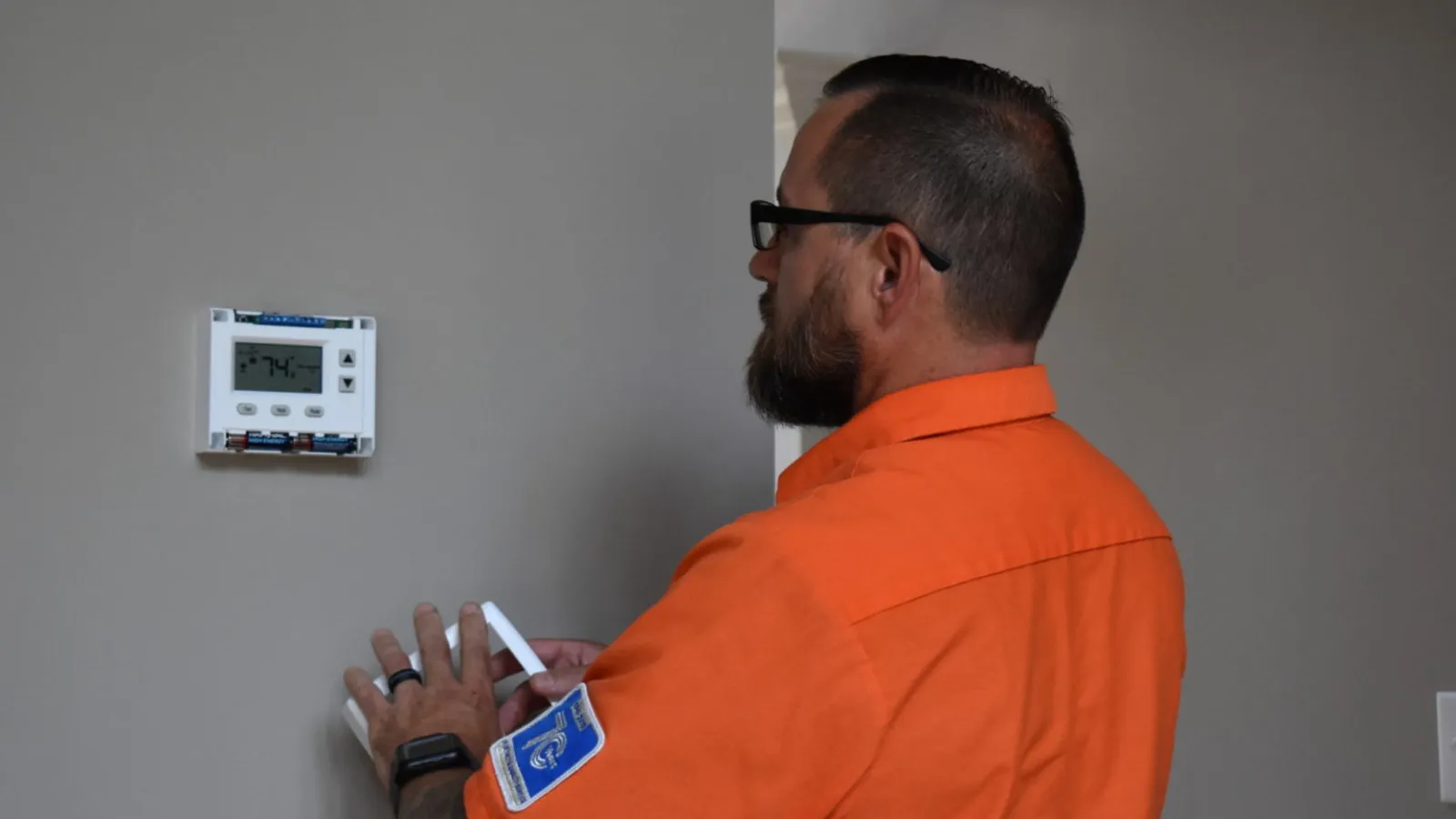Furnace troubles are the last thing Atlanta area homeowners want to experience when winter temperatures fall below freezing. On extremely cold days, homes with gas furnaces are at risk of a specific problem – freezing. Learn why this issue occurs and how to prevent a frozen furnace with help from a NATE-certified heating professional at Estes Services.
Why Do Furnaces Freeze?
New high-efficiency furnaces, also called condensing furnaces, utilize two-stage heating to maximize the extraction of heat energy from the combustion of fuel. Combustion exhaust passes into the furnace’s primary heat exchanger, then onto a secondary heat exchanger. In a conventional furnace, exhaust is vented out of the furnace flue from the unit’s only heat exchanger.
In a high-efficiency condensing furnace, exhaust gases remain in the system for a longer period of time, which allows the gases to cool and condense, forming moisture. As exhaust gases condense in the secondary heat exchanger, the moisture then exits the furnace through a condensate pipe that leads to a floor drain nearby or to the home’s exterior.
If moisture does not properly drain out of the condensate line, it can freeze within the line when temperatures drop below 32°F. To support proper drainage and prevent your furnace from freezing, the condensate line should:
- Be sloped at least a quarter of an inch per foot of PVC pipe
- Be supported between the furnace and exterior discharge point
- Be as short as possible between the furnace and the sidewall termination location
- Have an exterior discharge point that sits 12 inches above snow grade (the highest point above ground level that snowfall is expected to reach)
Condensate pipes on high efficiency condensing furnaces commonly freeze due to improper installation of the drain line. When the pipe sags, moisture can collect in the low areas and freeze when exposed to low temperatures. If the line is inadequately pitched or is too long, moisture takes longer to drain and may freeze as it cools while traveling through the pipe.
Improper placement of the new condensing furnace is another installation problem that contributes to frozen condensate lines, which is common when a new high-efficiency heating unit replaces an old conventional furnace model. The location of the original furnace may not be ideal for the new unit if it is in an area exposed to colder temperatures, such as in an attic or garage that lacks adequate insulation.
The discharge opening at the exterior of the home may also freeze in cold temperatures as moisture makes contact with cold, outdoor air. Ice may accumulate and block the exit, causing a backup in the drain line and more ice. External blockages such as snow or debris may also clog the line and hold water inside, causing it to freeze and close up the discharge point.
What to Do If Your Furnace Freezes
Unfortunately, measures that prevent your furnace from freezing are not always taken when a new condensing furnace is installed, and the unit’s condensate line may freeze. When the line freezes and moisture backs up, the furnace will shut down to prevent damage. You must thaw the line then take measures to prevent your furnace from freezing in the future.
- Pour warm (not boiling) water over the condensate pipe
- Fill a hot water bottle and hold it in place on the line
- Wrap the line in a heat wrap or electric heating pad
- Apply heat slowly using a hair dryer or heat gun
- Set up a space heater a few feet away from the line to warm the area
- Use a screwdriver and hammer to carefully break up an ice blockage at the exterior discharge point
How to Prevent Your Furnace from Freezing
There are several steps you can take to prevent your furnace from freezing when the weather gets cold, including:
- Place a small mound of rock salt outside your home right below the exterior opening of the condensate drain line to prevent ice formation
- Insulate the condensate drain line and floor drain
- Wrap the interior condensate drain line in heat tape
- Improve insulation levels in the area if the line runs through an unconditioned space such as an attic or crawlspace
If your furnace’s condensate line has frozen in the past, work with an HVAC technician to implement solutions that prevent your furnace from freezing. Solutions may include:
- Shortening the drain line
- Rerouting the drain
- Widening the exterior discharge opening
- Increasing condensate line slope
Need Help with Your Frozen Furnace?
A frozen condensate drain line will shut down your high-efficiency condensing furnace, leaving your Atlanta area home without heat. Prevent your furnace from freezing when you work with skilled heating and air conditioning professionals who ensure proper installation of your new furnace components and provide solutions to correct existing issues that cause your condensate line to freeze. For furnace installation and repair, call Estes Services today to connect with an HVAC professional.


